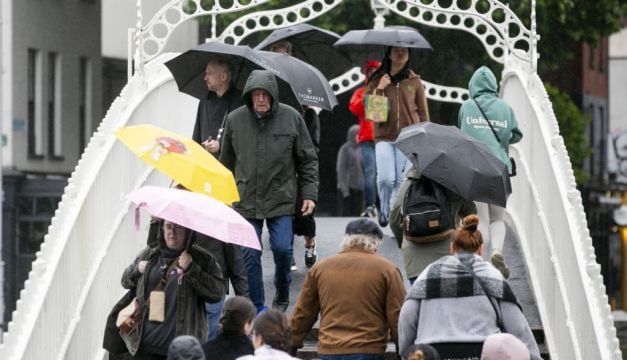Met Éireann has issued a rain warning for two counties as heavy downpours move across Ireland.
The national forecaster said Waterford and Cork can expect rain throughout the day on Tuesday, with a risk of localised flooding.
The status-yellow warning lasts until 3pm on Tuesday.
Heavy rain will also affect the rest of the country, though the showers will gradually clear eastwards by the afternoon.
It comes as new analysis from Met Éireann showed that Ireland has become wetter and warmer in the three decades since 1991.
🌡️🌍 Met Eireann's analysis of 30 years of Ireland's #climate data (1991-2020) reveals that #Ireland has become warmer, wetter and has seen an increase in sunshine hours when compared to the previous 30-year period.
Our climate is changing 👇
ℹ️ https://t.co/WGWSoj3yDJ pic.twitter.com/Tq3YcAcopUAdvertisement— Met Éireann (@MetEireann) July 18, 2023
Met Eireann’s analysis of the 1991-2020 climate averages shows the average air temperature during that period compared to the previous 30 years was 0.7 degrees higher.
The analysis also shows rainfall has increased by around 7 per cent over the last 30 years when compared to the 30 years from 1961.
This is an annual average rainfall of 1,288mm for the 1991-2020 period.
Average annual rainfall has increased by approximately 3-6 per cent in the east of the country and approximately 6-12 per cent across areas of the west and north.
While Ireland has experienced a wet and unsettled July, meteorologists predict that temperatures in the Mediterranean this week may surpass Europe's current record of 48.8 degrees, set in Sicily in August 2021, raising fears of a repetition of last year's heat deaths.
Stories of tourists being airlifted off Italian beaches or ferried away in ambulances from Athens' Acropolis have flooded European media in recent weeks.
Scientists have long warned that climate change, caused by CO2 emissions from burning fossil fuels, will make weather events more frequent, severe and deadly.







